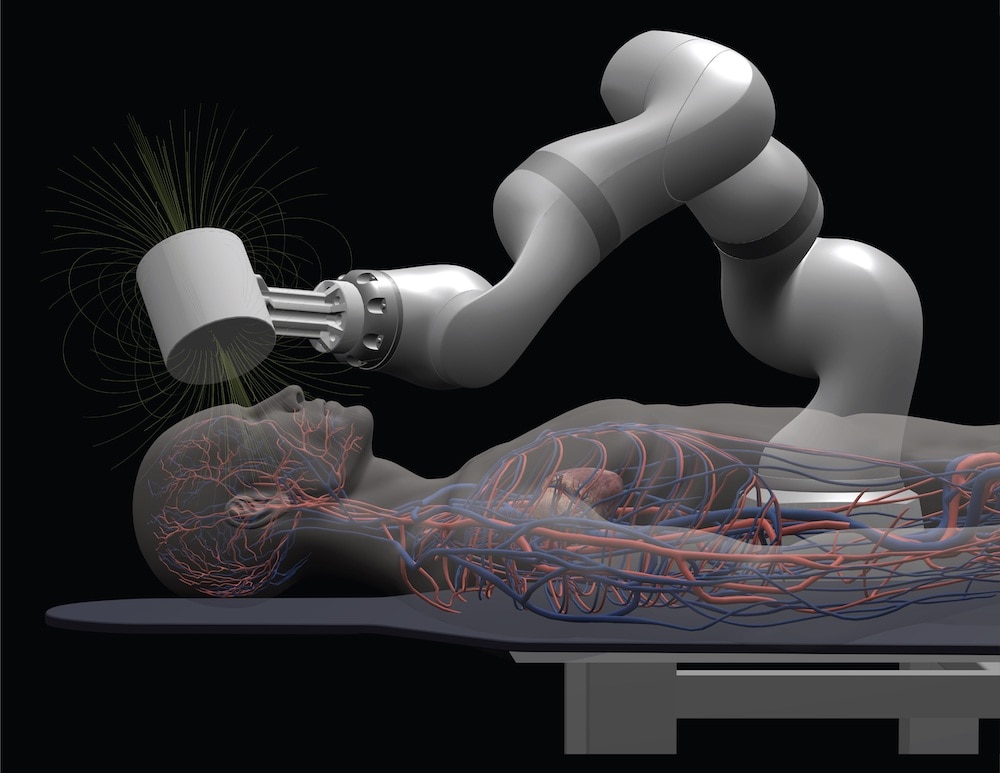Create a free profile to get unlimited access to exclusive videos, sweepstakes, and more!
Joystick operations gamify surgery at a distance
This is the highest stakes video game of all time.

In order to enact an interplanetary invasion, an alien species would likely need to have technology far more advanced than ours. In fiction, that usually relates to advanced weaponry and an ability to travel long distances in relatively short periods. In the 2010 science fiction film, Skyline, the aliens also exhibit advanced medical technology, which they use to suck the brains out of unsuspecting humans.
Those operations, gruesome as they are, were achieved remotely using specialized robots. The aliens themselves never had to get their hands — or whatever the alien equivalent is — dirty, or even be in the same room as the humans. We could learn a thing or two from the Skyline aliens, not about how to invade a planet, but how to more safely and efficiently perform medical procedures.
The last couple of years have seen a rise in remote medical care, as doctors attempt to balance the need to remain safe themselves with the needs of their patients. Additionally, robots are increasingly becoming a part of the surgical theater. It was only a matter of time before robots and remote access combined in a meaningful way. Xuanhe Zhao from the Department of Mechanical Engineering at MIT, and colleagues, have developed a robotic system for treating strokes or aneurysms remotely, using a joystick not unlike the ones you might use to play video games. Their research was published in the journal Science Robotic.
“Stroke is the number one cause of long-term disability and the number two cause of death, globally. Treatment involves manually rotating a J-shaped guide wire from outside the body, which takes four to seven years of training. Surgeons also need to use x-ray imaging, called fluoroscopy, to observe the location of blood vessels and the guidewire. So, they receive accumulated exposure over time,” Zhao told SYFY WIRE.
The complexity and nature of these operations present a number of specific challenges which can be addressed through remote robotic assistance. Because the training is so intense, there are a limited number of specialists capable of performing these operations and they tend to congregate around large medical centers in urban areas.
When a patient is suffering a stroke, there is a brief period of time, the so-called golden hour, during which treatment can alleviate the worst of the symptoms and improve long-term health.
“If you have a patient in a rural area and you move them to a large medical center, they’ve already missed the golden hour and could have irreversible brain damage,” Zhao said.
During tests, Zhao and his colleagues found that doctors could be trained to use their robotic system in only a couple of hours, dramatically reducing the years of training which is usually required. That’s because the system simplifies the way the guide wire moves through the body.
“At the center of the robotic system is a soft guidewire robot. It’s not J-shaped, it’s straight and made of a soft elastomer with magnetic particles. When you apply an external magnetic field, the wire bends on demand inside the blood vessels,” Zhao said.
The idea is to place these systems in hospitals and medical centers all over the country and the world, where they could be controlled remotely by specialists at the larger medical centers. Doing so would remove the need to transport patients long distances to get the care they need.
These systems could also make the operations safer for the doctors, by removing the threat of accumulated exposure to X-rays.
“A surgeon could operate it in another room in the same hospital that’s away from the radiation source, as well as in another city to remotely treat patients,” Zhao said.
So far, the system has been tested on realistic “phantom models” which have 3D printed blood vessels made of silicon rubber to approximate the anatomy of the blood vessels. They’ve also completed trials in live pigs, to validate the safety and efficacy of the system.
The next steps involve transitioning the technology out of the laboratory and into a startup company which will carry out human trials and gain FDA approvals. This sort of system could dramatically improve survival and prognosis of stroke and aneurysm patients, but that might be just the beginning.
“We focused on the brain because currently there are no FDA approved medical robots to do this kind of treatment, and it’s such a huge problem, so we wanted to solve this challenge first. The same system could be used for cardiovascular treatments and bronchoscopy,” Zhao said.
With only an off-the-shelf joystick, a magnet-wielding robotic arm, and a few hours of training, we can get inside the brain to remove blood clots or repair damage vessels. Which makes the Skyline medical robots feel like overkill, honestly.


























